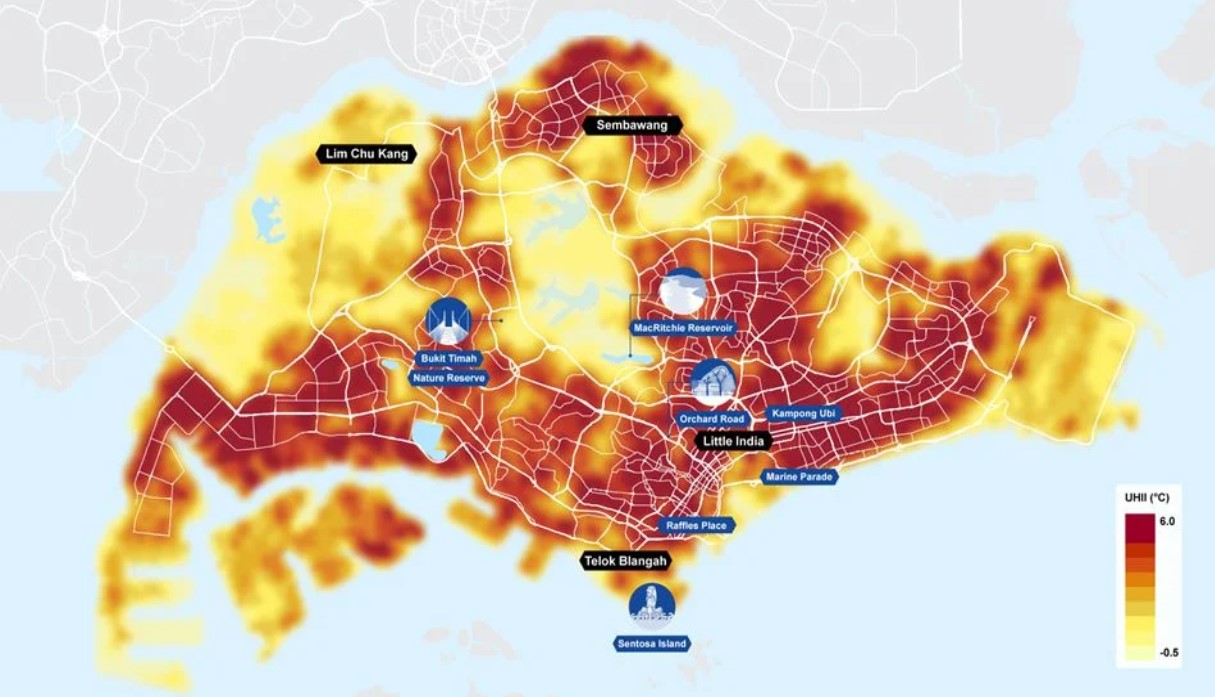Singapore is renowned for its scorching climate, with brief respite during the monsoon seasons. As we approach the end of this cooler period, it’ll certainly be helpful to know the city’s “hot spots”.
A recent study conducted by Arup, a global sustainable development consultancy, revealed various areas in Singapore which experiences higher temperatures compared to others. The finding identified Raffles Place as the hottest spot in the city whereas Upper Peirce Reservoir Park claimed the title of the coolest spot.
Raffles Place exhibited a remarkable 6.5 degree Celsius difference in temperature compared to Upper Peirce Reservoir Park. Can you guess why is that so?
It is due to the urban heat island effect.
What is the Urban Heat Island Effect?
Urban Heat Island Effect refers to the temperature differential between urbanized regions and their rural counterparts.
Urban areas are characterised by buildings, roads and other infrastructure that would absorb and re-emit heat from the sun more than natural landscapes such as forests.
Consequently, areas with extensive urban infrastructure and limited greenery, experiences the island’s highest temperatures, thus earning the “heat island” label.
Details of the Study
The study encompassed the entirety of Singapore, with a particular focus on a 150-square-kilometre section of Singapore’s urban centre, using Arup’s digital heat analytics tool Uheat.

Besides Raffles Place, other locations such as Telok Ayer and Amoy streets were listed among the hot spots. Despite their low-rise structures, the shophouses in these areas possess dark terracotta roofs that absorb substantial solar radiation, causing them to emit heat into the surrounding air. Additionally, the proximity of high-rise buildings further reduces the cooling effect, as they block cooling breezes from nearby Marina Bay.
Beyond the Central Business District (CBD) areas, neighbourhoods such as Orchard, Little India and Sembawang experienced at least 5 degrees Celsius above rural areas.

In stark contrast, the coolest spot was Upper Peirce Reservoir Park. This park has 88% water and 12% vegetation which absorbs heat, resulting in a more pleasant climate. Similarly, Sungei Buloh Wetland Reserve also falls into the cooler zone category.
Now that you’re aware of these temperature disparities, you can plan your activities accordingly to beat the heat or enjoy cooler surroundings.
Learn about Singapore’s Future Plans for a Cooler City
The study evidently indicates that temperatures are cooler where water bodies and greenery are present. Singapore, despite its limited land area, has devised a comprehensive plan for creating a cooler urban environment. This plan is the focal point of the exhibition titled “Shaping a Heat Resilient City.”
If you’re keen on learning how Singapore is tackling the challenges posed by climate change to ensure its status as a liveable city, you can visit the exhibition at the Urban Redevelopment Authority (URA) Centre, located at the atrium on the first level.
The best part? Entry is free.
The exhibition will run until 1 March 2024, providing ample time for you to explore Singapore’s vision for a cooler and more sustainable future.




